The Most Venomous Spiders in Australia
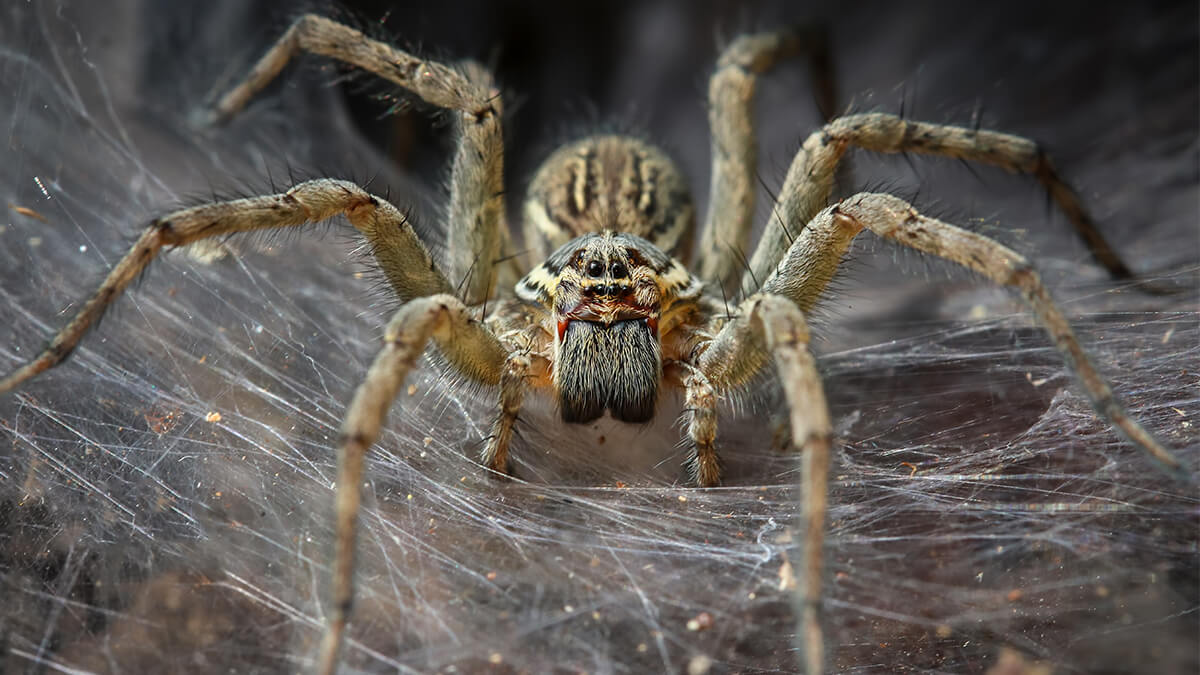
Australia is getting a bad rep all over the Internet for being the deadliest country in the world. The way the Internet sees it, everything here is trying to kill you. We have some of the most venomous snakes, marsupials that can send you to the emergency with one punch, and some of the most dangerous spiders in the world—no wonder the Internet is afraid of us.
Australian spiders are notorious all over the planet. That’s why spider control is one of our most widely used services. Some of our spider species are venomous and extremely aggressive, which is uncharacteristic for most arachnids. More timid spiders would generally prefer to avoid a confrontation, considering they can’t prey on us. Not these buggers, though. They’re as mean as they come. Here are the five most dangerous spiders in Australia.
Australian tarantulas
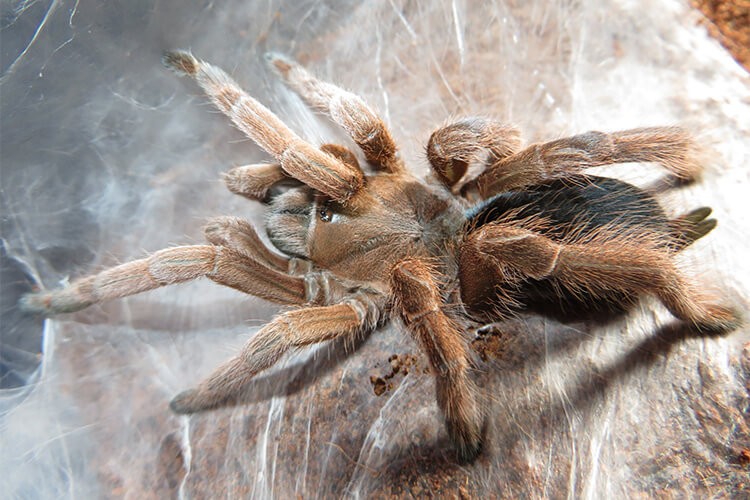
Tarantulas are large, hairy beasts from another plane of existence. They’ve been the stuff of nightmares for as long as humanity has known of their dreadful existence. Whoever said size doesn’t matter has never been near one of these hairy monsters. With a leg span of over 22 centimetres, the average Australian tarantula is about as big as your hand. Let that sink in for a moment.
This is not all. At the front of that colossal hulking mass of horror hide two large fangs, 1 centimetre in length each. If you don’t think that sounds like a lot, let us remind you this is big as some snakes’ fangs. And if that weren’t enough, some species can produce sounds similar to barking.
Luckily, tarantulas bites aren’t deadly to humans. That doesn’t mean they’re not dangerous, painful, and terrifying. Some of the negative effects may include puking, fatigue, and severe pain for hours. The development of spider-based superpowers has not been reported. Furthermore, their venom is still potent enough to kill a cat or a dog, so they represent a danger to pets as well, cementing their position in the list.
Australian tarantulas specifications
- Body: Australian tarantulas are large, and for their size, they are pretty heavy. Many of the Australian species are still undiscovered. The length of the tarantula’s body is around six centimetres, with their leg span around 15 centimetres. Australian tarantulas also sport a pair of fangs that are around one centimetre long.
- Habitat: Australian tarantulas live in burrows in the ground. You can encounter them in Queensland, New South Wales, South Australia and Western Australia.
- Diet: Despite their name, Australian tarantulas rarely feed on birds. Their diet mainly consists of frogs, insects, lizards and other species of spiders.
- Danger: Bites are rare and only occur when tarantulas are provoked. The bites from Australian tarantulas are painful to humans and can sometimes lead to illness, nausea and vomiting. Tarantulas are dangerous for pets, and their venom is strong enough to kill dogs and cats.
Read also about the venomous Fire ants.
Recluse spider
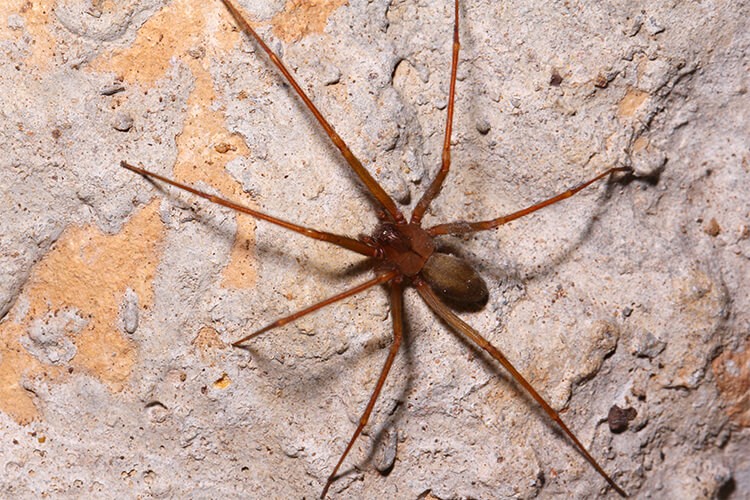
The recluse spider is like the socially awkward kid in class, who (as it turns out) has anger issues when threatened. The good news is the recluse spider is generally rare, so reported bites to humans are few and far between. The bad news is that when bites do occur, they are truly horrific. The recluse spider’s venom has necrotic properties, which means it starts to kill the tissue. Reports state the process is excruciating, while the tissues take a long time to heal.
Lucky for us, the rarity of the recluse spider is not the only good news. It also has relatively tiny fangs, which makes it more challenging to achieve envenomation. Furthermore, it’s not one of the most aggressive spider species out there, though do not be fooled – it will bite when threatened.
More bad news – the recluse spider seems to be resistant to many insecticides, making it relatively difficult to handle. If these spiders were more common, they would’ve been a real problem. In this case, rarity is here to balance the equation.
Recluse spider specifications
- Body: Fairly small, the brown recluse spider’s body ranges between six and 20 centimetres. They are typically light to medium brown.
- Habitat: Recluse spiders prefer to build their webs in garages, closets, sheds, and dry and relatively undisturbed places. The danger is that they are sometimes found in toilets, gloves, shoes and rarely used beds.
- Diet: As dangerous as they are in Australia, the recluse spider’s diet consists of crickets, cockroaches and soft-bodied insects.
- Danger: The bites are initially painless; however, they can be dangerous. Their venom can kill the flesh, and the recovery period is often long. The chances for necrotic properties are around 51% of all bites.
Learn more: What Attracts Spiders to Your Home
Mouse spider
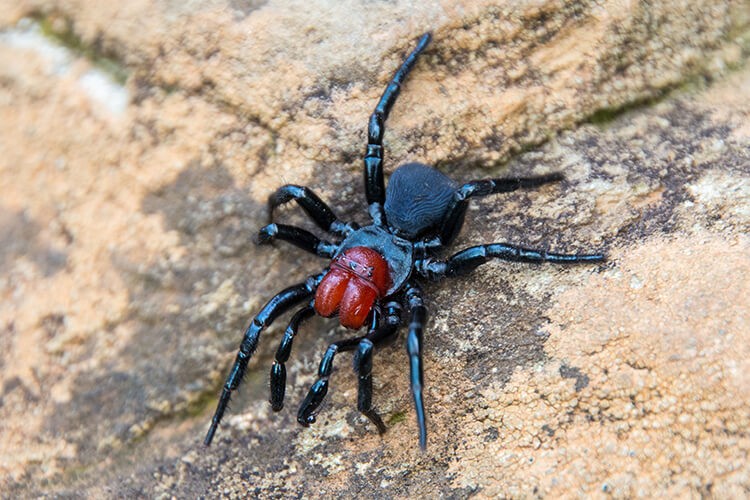
Even though it’s not as big or hairy as the tarantula, the mouse spider is scarier for several reasons. First off, it just looks menacing. It can definitely play the part without any preparation. Second, it’s one of the most venomous spiders in Australia (and the world). Its powerful jaws and large fangs allow it to hunt even small mammals without a problem. This spider has no trouble hunting down mice or lizards, whereas most spiders eat insects.
The toxicity of the venom makes this spider extremely dangerous. Lucky for us, there are effective antivenoms, which administered in time should prevent a lethal outcome from a spider bite situation.
Mouse spider specifications
- Body: The body of the Mouse Spider ranges from 10mm to 35mm. Their heads are distinctively round and large around the fangs.
- Habitat: Mouse Spiders are found all over Australia. They inhabit open forests and shrublands.
- Diet: The prey of the Mouse Spider are ants, beetles, other spiders and smaller lizards and frogs.
- Danger: The venom of the Mouse Spider is very toxic. With proper first-aid with antivenom, it’s proven that fatal ends can be avoided.
Read also: Trapdoor Spiders in Australia
Redback spider
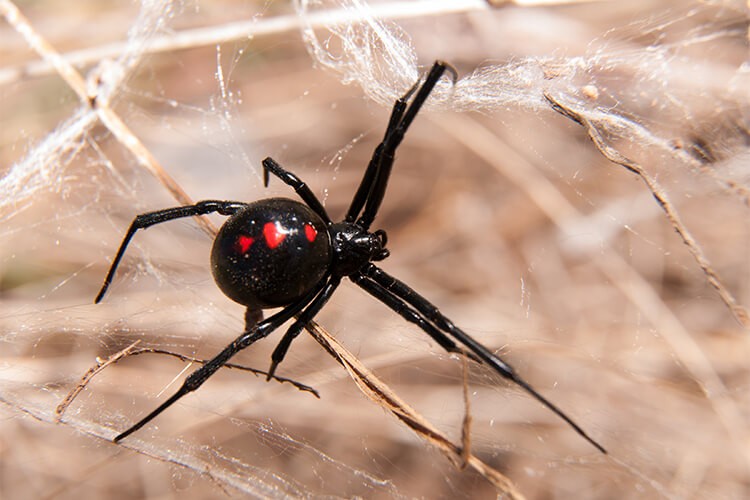
Redback spiders gain their name from the distinctive red stripe on their backs. Even in urban environments, they are relatively common. They prefer to reside in dry, hidden places such as sheds, mailboxes, kitchen cupboards, under toilet seats, and other sites where you’re in it for a nasty surprise.
Their size isn’t intimidating, but because they’re small, they’re difficult to spot and are pretty swift, dialling the danger factor up by quite a bit. This accounts for the relatively large number of bites compared to other spiders on this list.
Their bite can be lethal. The redback spider’s venom is a neurotoxin that can shut down different systems in the human body. However, an antivenom was introduced in the middle of the last century, so the number of deaths has fallen drastically (there hasn’t been a single reported case in more than 50 years). That doesn’t mean their bite is harmless – even if it doesn’t kill you, symptoms include severe pain, nausea, and general malaise, all of which can last for hours. The redback spider’s bite is a threat that you should not take lightly.
Redback spider specifications
- Body: The Redback Spider has about 10 mm for female species and three to four mm for male species. They have an hourglass-shaped body, and females sport a red stripe on their back.
- Habitat: They are found throughout all of Australia. The Redback Spider commonly seeks shelter close to or inside human residences. Otherwise, they prefer warm and sheltered locations.
- Diet: The Redback Spider preys on insects, other spiders, small lizards and rarely on snakes.
- Danger: The redback spider has more envenomations that require an antivenom than any other creature in Australia. They can be found hiding in shoes, clothes, and outdoor toys. They have been reported to bite multiple times. The outcome of a bite in humans is intense pain.
Read also about: Jack jumper ant
Sydney funnel web spider
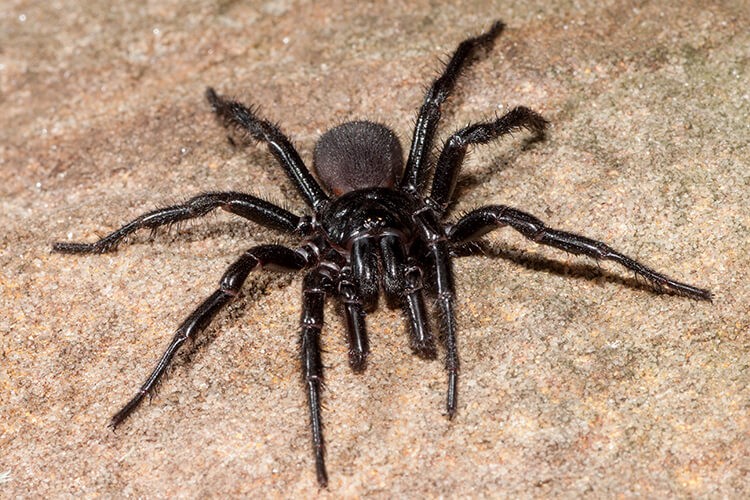
The Sydney funnel-web spider is the most dangerous in Australia and quite possibly the world. You can find it in forests, but urban areas aren’t a foreign concept to this deadly creature. As long as a place is hidden and humid, it’s perfect for them. They can quickly move into a backyard or even fall into a swimming pool, making them relatively common.
The Sydney funnel-web spider is so dangerous because it has a lot of venom and is not afraid to use it. The spider has enough venom to kill a full-grown adult and delivers it through multiple painful bites. It can lead to multiple organ failures.
Its fangs are bigger than those of the brown snake and are strong enough to pierce through the fabric, shoes, and even fingernails. To make matters worse, the Sydney funnel web spider is exceptionally aggressive. It doesn’t need much to be provoked and start biting left and right.
The good news is there’s an effective antivenom, so the lethality of the bites has been significantly reduced. Funnel web spiders are far from harmless, regardless. With their powerful and painful bite, they can cause you to agonise for quite a while.
Sydney funnel web spider specifications
- Body: The Sydney funnel web spiders are medium to large in size, with body length from one up to five centimetres. Their hairless carapace on the front of their body with hairs on their legs.
- Habitat: The funnel web spider can be found in all of Australia. They live in moist, cool, sheltered habitats. Under logs, rotting burrows and some trees are preferred living places for the Sydney funnel web spider.
- Diet: The Sydney funnel web spider feeds on frogs and lizards.
- Danger: The venom of the funnel web spider is extremely dangerous to humans. It takes about 15 minutes for a bite to end fatally in children, while in adults, it takes around 28 minutes for symptoms to occur.